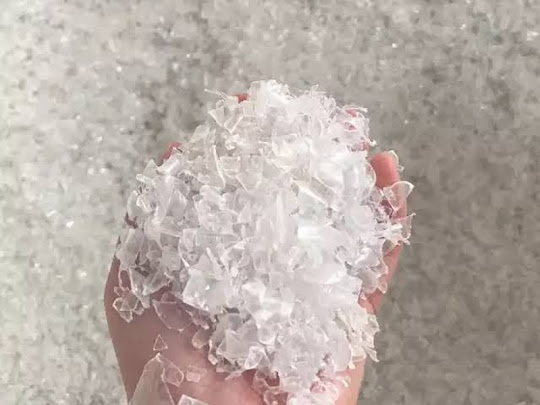Why Are Agro Monofilament Yarns So Widely Used?
Agrotextiles are textiles used for their functional benefits in the agricultural field. With the continuous increase in population worldwide, the stress of agricultural crop production has increased. Hence, it is necessary to improve the yield and quality of agro-products within the space and water constraints we face today. However, it is impossible to meet this increased demand completely with traditional methods such as pesticides and herbicides. The agriculture and horticulture industries have realized the need to pursue various technologies for higher overall yield and better quality agro-products like agro monofilament yarn.
Agro monofilament yarns are known for their versatility. For instance, they are used in the construction of shade nets, bird protection nets, and crop covers, providing strength and durability to these essential agrotextile products.
The essential properties required in agro textiles are strength, elongation, stiffness, resistance to sunlight, and resistance to toxic environments. All these properties help grow and harvest crops and other foodstuffs. With the growing number of diseases due to various chemicals and pollution, emphasis is placed on organic foods and vegetables today. These are best done with controlled use of water, sunlight, and composts duly achieved using geotextiles.
The various types of agro-textile products are:
1. Shade Nets
2. Windshield Nets
3. Bird Protection Nets
4. Crop Covers
5. Plant Nets
6. Root Ball Net
7. Anti-Insect Nets
8. Harvesting Nets
9. Mulch Mats/Ground Covers
10. Anti-Hail Nets
11. Fishing Nets
12. Turf Reinforcement/Protection Net
13. Pallet Net Covers
14. Woven Sacks/Bags
15. Leno Bags
Making of monofilament yarn
Monofilament yarn making machines, essential equipment for producing high-quality monofilament yarn, find applications in a wide range of products, including ropes, nets, brushes, and fishing lines. The process of making monofilament yarn involves extruding molten plastic through a spinneret, which forms a single, continuous filament. This filament is then wound on top of a spool, creating a monofilament yarn. Two of the most common types of monofilament yarn making machines are PET monofilament yarn making machines and PP monofilament yarn making machines . PET monofilament yarn is made from polyethylene terephthalate (PET), while PP monofilament yarn is made from polypropylene (PP). Both types of yarn are known for their strength, durability, and versatility. The agro monofilament yarn extrusion machine industry is constantly evolving, with the new technologies emerging to enhance the efficiency, accuracy, and sustainability of these machines.
Shade nets for the agriculture sector
Shade nets are made of polyethylene or polypropylene thread with specialized UV treatment and different shade percentages. These nets provide a partially controlled environment by primarily reducing light intensity and adequate heat during the time for crops grown under them. This enables lengthening of the cultivation seasons and off-season cultivation depending on the conditions and type of crop. Shade nets are typically used in shade net houses, which are frame structures made of GI pipes, angle iron, wood, or bamboo, which are then covered with shade nets to provide the above benefits.
In conclusion
As agro-textile products are mainly manufactured from synthetic fibers, there is a need for intense research on replacing those synthetic fibers with natural fibers. While natural fibers offer potential benefits such as biodegradability and reduced environmental impact, they also present challenges such as lower strength and durability. Many research works are replacing synthetic fibers with natural fibers and fiber wastes in agro-tech products, aiming to balance sustainability and functionality. In this article, the authors have demonstrated different types of agro-textile products classified under the specialized fields of its end use. It is necessary when a new agro-textile product is designed, the requirements mentioned are vital to be considered.
In the future, there will be a demand for agro-textile products as there is a need for increased productivity and better quality because of the increasing population and better hygienic habits. Engineered farming has become a global trend due to the same reason, and products enhancing the same, like these agro-textile nonwovens, would certainly increase crop productivity, quality enhancement, and value addition of the yield crop.

.jpg)
.jpg)
.jpg)
Comments
Post a Comment